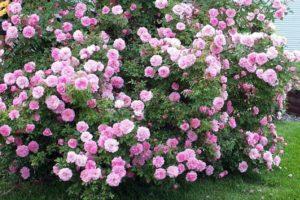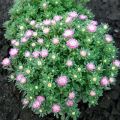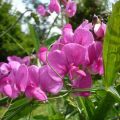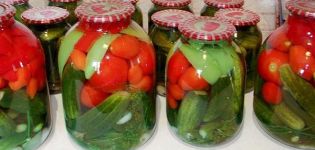Description of the types and varieties of loosestrife, planting and care in the open field
Looseweed is a resistant, hardy and noble plant. It grows rapidly, dissolves its buds, delighting with beautiful flowering. If you want to decorate your garden or summer cottage with a loosestrife, you need to familiarize yourself with the intricacies of planting and caring for a perennial.
Description
Verbeynik from among herbaceous perennial plants of the Primroses family, which has 150 species. Some varieties of this culture are characterized by such common features as yellow flowers, connected in spike-shaped, corymbose inflorescences, powerful straight stems, simple, opposite leaves. But there are varieties that differ significantly.
Types and varieties
Common cultivated species and their best varieties.
Ordinary
Verbeynik is characterized by straight pubescent shoots up to 1 m tall, whorled, oval-shaped leaves, collected 3-4 pcs. In June, complex pyramidal inflorescences bloom, containing small yellow flowers.
Point
Perennial loosestrife with straight, slightly branched shoots up to 80 cm in height. The foliage is tight to the shoots. The flowers are small stars, collected in bunches, are characterized by a golden color.
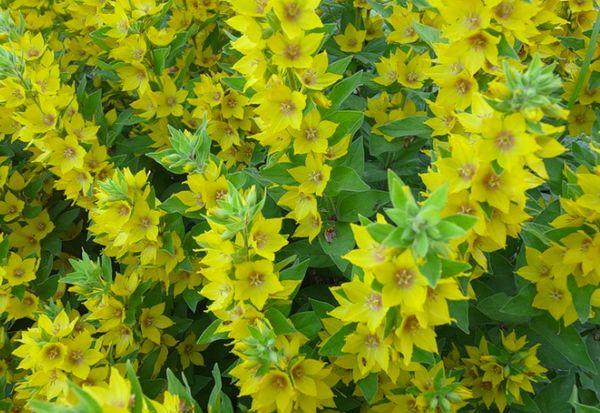
Fascinates with the beauty of flowering from June to the last days of August. The best varieties of this variety are:
- Verbeinik Alexander (lysimachia);
- Golden Alexander.
Coin-shaped
Perennial loosestrife, forming thin stems, 30-40 cm in length. The bushes are decorated with round leaves, light green, in the form of coins, growing in pairs on small petioles that are opposite each other. The frequent flowers of the loosestrife with five yellow petals, which flaunt in the axils of the foliage, attract attention.
Aurea
Perennial loosestrife Aurea is considered an ornamental plant with a recumbent stem up to 30 cm long. Oval-shaped leaves are on short petioles. The variety is prized for single, axillary flowers of yellow color. Blooms in June for about 20 days.

Goldilocks
An ornamental variety with unusual greenery with a golden tint. The flowers of this variety have a rich yellow color.
Cagelike
Perennial loosestrife bushes up to 1.2 m in height. An interesting variety with oval lanceolate leaves 15 cm long, which are placed alternately on straight shoots, and snow-white inflorescences with drooping tops. Blooms in July - August.
Purple
Verbeynik Purple has straight stems up to 50 cm in height and paired broad-lanceolate foliage of purple color. Loose inflorescences consist of small flowers of yellow color with a lemon tint.

Lostweed flowers bloom in August and are pleasing to the eye before the first frost.
Black magenta
Perennial loosestrife, the height of which varies from 45 to 90 cm, has spike-shaped inflorescences, consisting of flowers of burgundy, almost black color, and lanceolate green leaves with a silvery sheen. The interesting corrugation along the edge of the sheet plate makes this look popular.
Blooms from July to August. The most common cultivar is Beaujolais.
Ciliated
Ciliated loosestrife Firecracker has a straight, powerful stem and large, oval brown leaves. Flowers in the form of yellow bells are collected in dense inflorescences that are located at the tops of the stem. Blooms in September.
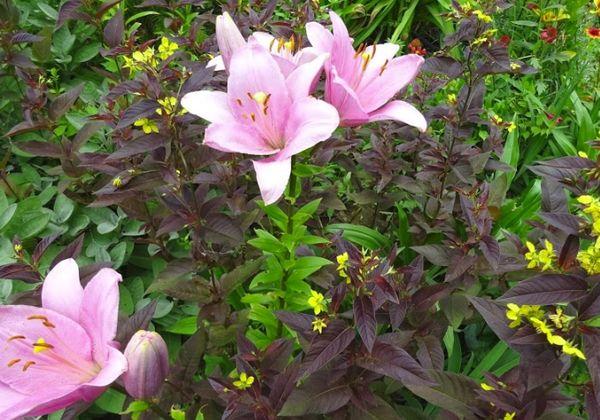
Dubravny
The perennial loosestrife Dubravny has a non-branching stem that can rise 10-30 cm above the soil. It is valued for its large, wide leaves and yellow single flowers that bloom in May and bloom until July.
Ephemerum
Verbeynik up to 1 m in height, quickly forming dense thickets. The stem is straight, the foliage is elongated-lanceolate, having a silvery color. At the end of summer, five-petal, white flowers with long stamens are formed, which are collected in spike-shaped inflorescences.
Cartilage
This variety of loosestrife is characterized by rapid growth, has straight, powerful stems up to 60 cm high, narrow, lanceolate leaves and fluffy inflorescences consisting of yellow flowers with protruding stamens. This is the only variety that blooms in the last decade of May.
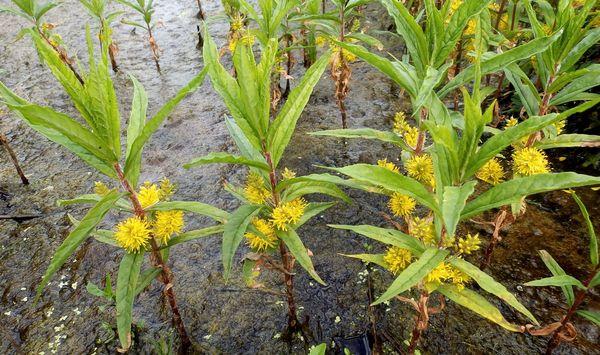
Crowded-flowered
A spectacular loosestrife with stems up to 40 cm long, at the ends of which, from May to September, original yellow flowers with reddish strokes at the base of the petals bloom in abundance. The foliage is characterized by juiciness and rich green color.
Lily of the valley
This type of loosestrife is considered the most prolific of all available, since it has branchy roots, painted pink, similar to lily of the valley. Because of what it got its name. Perennial with a straight, strong stem, up to 50 cm in height and spike-shaped inflorescences consisting of snow-white flowers, the length of which is 20 cm.
Blooms in July for about 20 days. Famous varieties include:
- Lady Jane;
- Geisha.
Alexander
Alexander is characterized by an unusual green foliage framed by a white border. The culture has a straight, weakly branched stem, the top of which is decorated with many star-bell-shaped yellow flowers. Flowering will delight at the end of June.
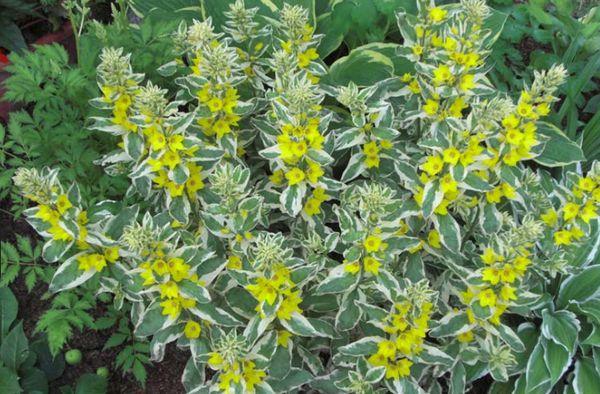
Creeping
This type of loosestrife is characterized by a tetrahedral, creeping, slightly branched stem, which can grow up to 50 cm in length. Its bushes are decorated with round opposite leaves with short petioles. At the time of flowering, it shows off golden flowers similar to bells.
Whorled
Loose bush with a height of 30 cm to 1 m with an elongated root. Differs in a straight stem, ovate-oblong leaves on long petioles, collected in a whorl. The leaf plate is softly pubescent on the underside. Correct flowers in whorled inflorescences, with pedicels noticeably elongating at the time of fruiting.
Features:
Due to its natural characteristics, the loosestrife is able to grow on infertile soils.Even its nondescript appearance has enviable popularity, and the secret is that it pleases with abundant, long flowering and practically does not require maintenance. The lower flowers bloom first, then the upper ones open, blooms for about 30 days.
Outdoor cultivation
Even a beginner will not be difficult to grow a culture, since the plant takes root easily and quickly.
Seat selection
For breeding loosestrife, you need to stop the choice in a shady place with moist, nutrient-rich soil.
Ground requirements
In the presence of infertile soil, equip it with a complex of mineral fertilizers before planting.The main condition is a very moist, moist soil with good drainage. Do not plant the crop on clay soils.
Seed preparation
To grow healthy loosestrife bushes, you must first prepare the planting material by stratification - hardening seeds in the cold at temperatures of 8-10 degrees for 1-2 months.
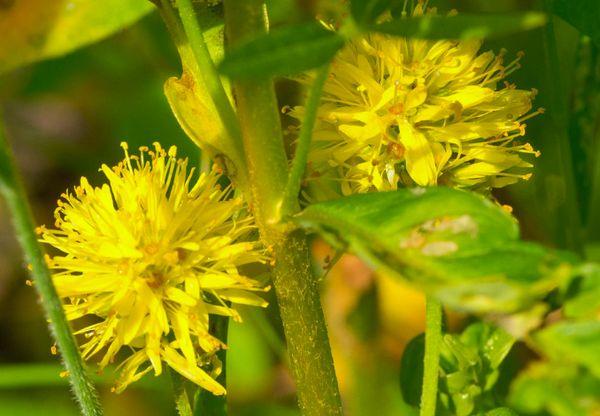
Landing scheme
The loosestrife planting is carried out in the spring according to generally accepted rules and involves the following actions:
- Take small boxes, fill them halfway with a mixture of peat and sand.
- Sow the seeds, leaving a gap between the units of 2-3 cm.
- Sprinkle on top with soil mixture 0.5-1 cm.
- Close the containers with glass and send them to a place where it is warm and light.
- After 2 weeks, seedlings are formed, the shelter must be removed immediately.
- Dive when 2-3 true leaves are formed.
- A week after picking, start hardening the seedlings by taking them to fresh air for 2-3 hours.
- Hardened seedlings can be planted in a flower bed. To do this, make holes, observing the distance between them 40-60 cm, then place them in the holes and, sprinkle with soil substrate, lightly tamp.
- Moisten and loosen the soil.
In the fall, you can plant a culture with cuttings or shoots. The ideal time for disembarkation is September.
Growth restraints
Verbeinik forms a powerful root system that seeks to capture most of the territory. Therefore, in order to preserve the beauty of the flower garden, its growth will have to be regularly limited by removing excess shoots. You can also dig in restraints, which can serve as slate, brick, stone, buried 20 cm.
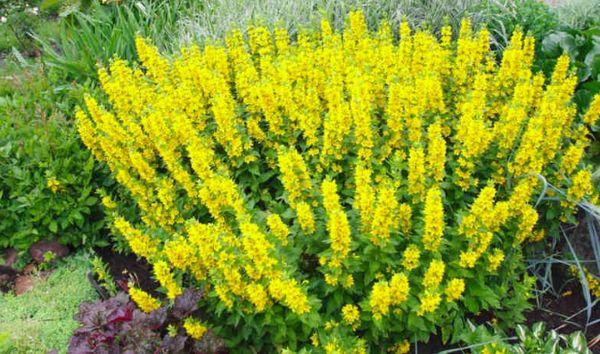
When cultivating a crop, it is imperative to prevent the spread of roots over the sites.
Care
Verbeynik is unpretentious in care, as the culture grows and multiplies on its own in an open-air flower bed. But in order for the perennial to play with all kinds of colors, it is necessary to surround it with care and attention.
Watering
A perennial does not require abundant watering, since for a planting site, preference should be given to areas fed by groundwater. Additionally, the soil should be moistened during the dry season.
Top dressing
The verbeinik does not need additional fertilizing, it is only in the presence of scarce soil that it is recommended to use special fertilizers. Submit them in the period from May to June, no more than 1 time in 14 days.
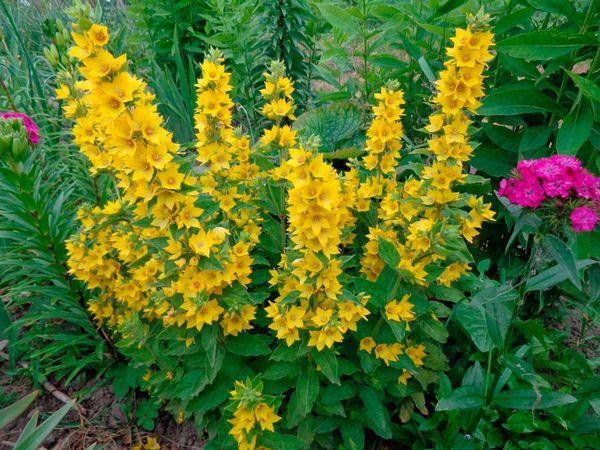
Pruning
At the end of flowering in vertically growing specimens, it is necessary to cut off the faded inflorescences. Dried leaves and injured parts of the flower are also subject to removal. And in the fall, cut off the stems completely, leaving 2-3 cm, and sprinkle with compost.
Transfer
For the full growth of the loosestrife, it must be constantly transplanted. Although it can grow in one place for 10 years, but 2 years after disembarkation, it will grow and form many children. It is recommended to transplant such a bush. The event is advised to take place in spring and autumn, when the foliage falls.
Mulching
In the spring, mulching can be carried out around the bushes, this will retain moisture in the soil for a long time.
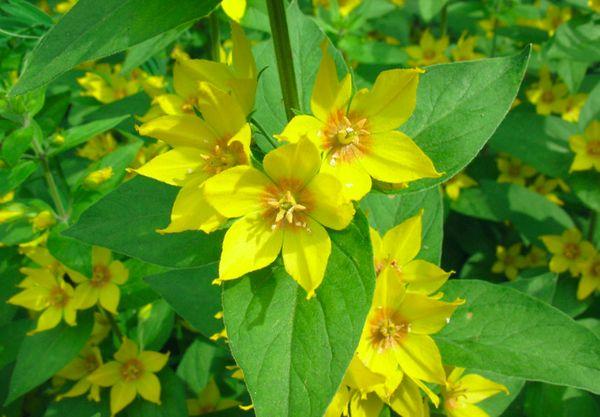
Wintering
The frost resistance of the loosestrife allows you not to cover it for the winter. It easily tolerates wintering, which is why it does not require additional shelter.
Reproduction
Verbeynik is bred by dividing the bush, it can also be propagated by using cuttings using seeds.
Seeds
When breeding a crop with seeds, this should be done in late autumn by sowing in open ground - so the planting material will be subjected to natural stratification.
You can sow in February - March, using containers filled with a soil mixture consisting of sand, peat, garden soil. Send boxes with crops for 30 days in a cold room, then place them on a windowsill, which is illuminated by the sun, and create a temperature of + 18-20 degrees. Then the seedlings need to be dived, and at the beginning of June they should be planted in the garden.
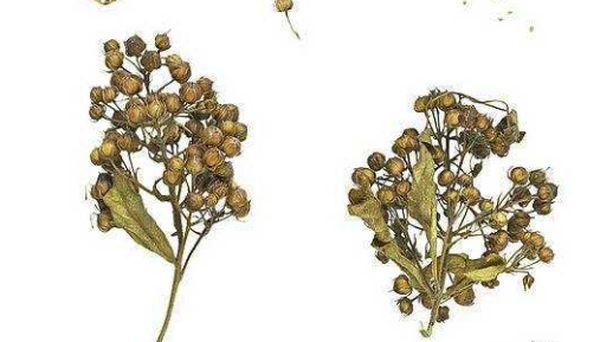
Vegetatively
The verbeynik can be diluted by dividing the bush, growing lateral shoots. This procedure is best done in spring. Another culture can be grafted by using young shoots for this.
Diseases and pests
One of the positive aspects of this culture is its resistance to disease and pests.
Weevil
Loose weevils can attack. Eaten foliage will signal their invasion. Also, beetle larvae undermine the roots. The insect is activated at night, so it is necessary to collect it after the sun goes down.
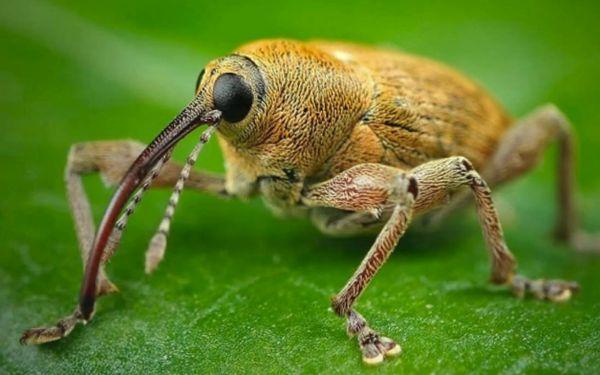
Aphid
Aphids can become a dangerous enemy for the loosestrife. This is evidenced by the unhealthy appearance of the bushes. This insect must be fought with modern chemicals.
Caterpillar
Gluttonous, uninvited guests are caterpillars, which, if uncontrolled reproduction, can harm loosestrife bushes. They need to be fought with using folk remedies or insecticides.
Using
Due to its mesmerizing appearance and undemanding nature, culture is popular in landscape design. And the ability to treat many diseases makes the plant a medicine that should be in every home medicine cabinet.
Landscape design
Due to its unpretentiousness, frost resistance, unusual beauty and adaptability of the loosestrife, gardeners often give preference to it when creating landscape design. It decorates buildings in the garden, arbours, small fences. Serves as a living decoration of fountains, artificial reservoirs.
ethnoscience
Verbeinik belongs to medicinal plants that are used in traditional medicine recipes, as well as for the preparation of cosmetics. To take out the maximum benefit, you need to take into account the existing contraindications.
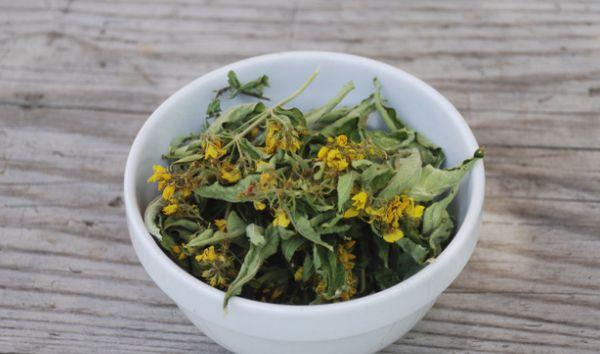
Herbal infusion
To make the infusion, take 1 tsp. herbs and pour 250 ml of boiling water, set aside for 1 hour. Drink 50 ml of the drug per day for anemia, stomach diseases, arthritis.
Vitamin tea
To get healing tea, you need 1 tbsp. l. loosestrife pour a glass of boiling water. Put to infuse when the product cools down, filter and drink 1 tbsp before meals. l. with liver diseases and gastrointestinal disorders. You can apply the tea externally to gargle your throat and as an antiseptic for wounds.
Decoction
A medicinal decoction can be made from the aerial part or roots. Pour 20 g of crushed plant with boiling water and keep in a water bath for 30 minutes, filter. Drink 1/3 cup 2-3 times a day for colds and upset stomach and intestines.
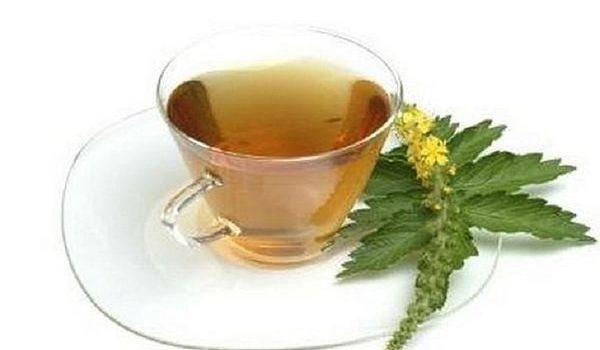
Combination with other plants
The verbeinik looks great next to shade-loving perennials under the canopy of trees. Creates a wonderful tandem with a plant such as a fern. Looks impressive surrounded by phlox, sedge, dwarf irises.
Answers on questions
Often gardeners ask such questions:
- How to trim the loosestrife correctly? The plant needs to be pruned. The operation should be carried out after flowering, removing dry branches, and for the winter, completely cutting the bush at the root.
- Need to transplant a crop? When growing, the degree of growth of the plant should be taken into account, young branches are recommended to be transplanted from the mother bush. If this is not done, the loosestrife will take over all the flower beds in the neighborhood and drown out other crops.
- How to deal with caterpillars? Threats to loosestrife and caterpillars. To combat them, you can resort to mechanical methods: remove damaged parts of the plant, dig up the soil near the bushes, destroy the nests with eggs and larvae found. A folk remedy is also effective: treating the plant with an aqueous solution of liquid soap.
It will be a pleasure to grow loosestrife, since its advantages in undemanding care, beautiful appearance and quick adaptation to various weather conditions have won many gardeners. And the mass of useful properties is of great interest to the healers of traditional medicine.
Reviews
Marina: “I planted a loosestrife in the garden near an artificial reservoir. His bushes look original and do not need special care. Bright flowers delight me throughout the summer. "
Vladimir: “My attention was attracted only by the lily of the valley species of loosestrife. Its spectacular appearance won my heart. I do not consider other varieties for cultivation on my site. "
